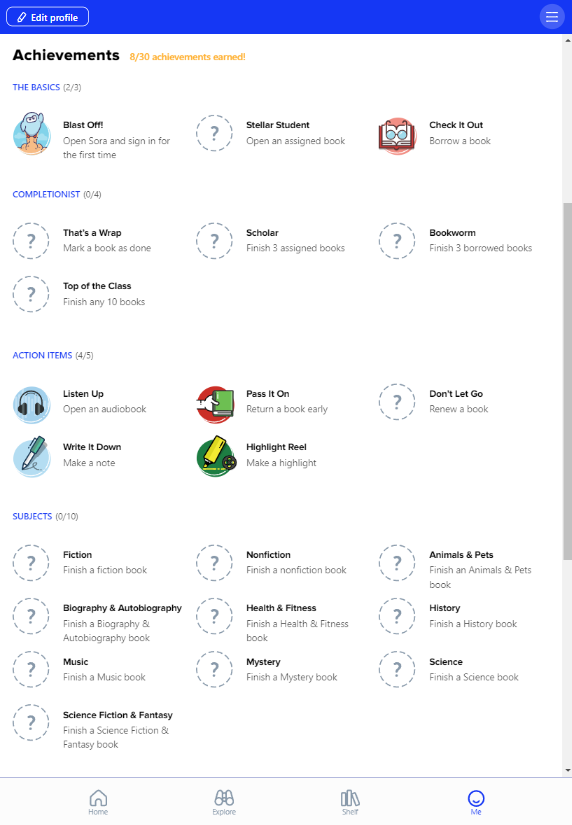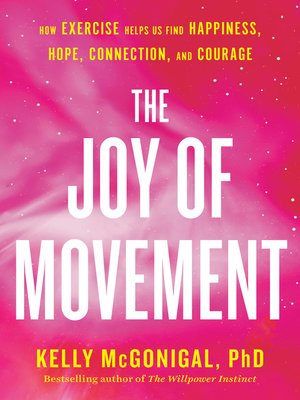![6 Sora lessons for electives based on the Technology Integration Matrix [Sora in the Classroom Series]](https://companyoverdrive.cdn.overdrive.com/wp-content/uploads/2024/03/2024-sora-in-the-classroom-electives-feature-image-1000x705-1.jpg)
6 Sora lessons for electives based on the Technology Integration Matrix [Sora in the Classroom Series]
In this recurring Sora in the Classroom series, we discuss lesson ideas for using Sora to support your state and district technology and curriculum requirements in all subject areas. In the prior four parts of this series, we learned how easily Sora can be incorporated into ELA, science, math and history classrooms.
But what about classrooms outside of core subjects? How can a teacher use ebooks and audiobooks in an art class? Or for a business course? In this final installment, we’ll focus on how Sora can be a tool to achieve the learning goals of elective courses.
These lesson ideas are all broken down using the Technology Integration Matrix (TIM), which emphasizes use of technology in the classroom to improve student learning. TIM incorporates five interdependent characteristics of meaningful learning environments: active, collaborative, constructive, authentic, and goal-directed. These characteristics are associated with five levels of technology integration: entry, adoption, adaptation, infusion, and transformation.
Below are TIM-based lesson ideas that can be used for various electives.
 TIM Level: Authentic Transformation
TIM Level: Authentic Transformation
For this lesson, applicable to an art or graphic design class, have students analyze the design of the current Sora achievement badges. Ask them:
- What changes would they make, and why?
- In their opinion, could any of the designs be clearer?
- Why do they think the badges are designed the way they are?
Afterward, have students brainstorm new achievement categories and design corresponding badges.
Extension Activity
Differentiate for lower or higher grade levels by adjusting the critical thinking questions or tasks. For example, lower grades can create their new badges on paper, while upper grades can use graphic design programs.
TIM Level: Authentic Adaptation
In this lesson, applicable to an art or graphic design class, choose a popular title that contains very descriptive language for the book’s scenery/setting. Then, play the section of the audiobook that describes that scenery for the class. Students will draw or paint what they’re hearing from the audiobook, or use a program to digitally create an image of the scene.
Once all students have finished, have them respond to critical thinking questions. For example:
- Did everyone interpret the description the same way?
- For some readers, long textual depictions of scenery can lag. When translated into action/art, was that still the case?
- Did actively participating in the author’s vision help bring it to life?
Extension Activity
Have students search through an audiobook to find a scene that lacks detailed information about the setting or scenery. Students can then brainstorm which descriptive words would add more detail to that specific scene and draw/paint the scene. Once finished, they can write a response explaining how their additions affect the rest of the text or the story/setting overall.
TIM Level: Collaborative Transformation
This lesson idea is great for a business class. Students can break out into groups to create a marketing campaign to promote Sora to a target audience – for example, school administrators, or even your whole school or district. Requirements could include:
- Posters
- Online ads
- Social media posts
- Email blasts, etc.
Each group would need to decide which features of Sora are the most appealing to their target audience and design their campaign to highlight those features and effectively sell Sora.
Extension Activity
Change the target market to students in grades K-2. These grades are just learning to read, so how can you persuade students at this level to use Sora? How can Sora appeal to these students? Create marketing materials for this audience.
TIM Level: Active Entry
This lesson idea centers around designing a Sora Scavenger Hunt for a foreign language class.
To begin, students will need to change the Sora interface language (13 options) to the designated language. Changing the language of the Sora interface will translate the commands and menus throughout the Sora experience, but it won’t change the language of the books themselves.
Provide instructions for the scavenger hunt in the target language.
You might have students to complete tasks like:
- Changing their filters to juvenile titles only
- Identifying how many titles appear in a specific collection or category (i.e. Nature)
- Finding high-contrast mode in the settings and enable/disable it
Students can take screenshots to prove they found each scavenger hunt item.
Extension Activity
This lesson can be differentiated by changing the focus on the scavenger hunt. For example, classes can focus on the commands and giving instructions. Students can write their own prompts like adding three more of their own scavenger hunt items. They can also write commands for students using Sora for the first time, including instructions on how to log in, search for a title, and borrow or place a hold on that title.
TIM Level: Active Adoption
This lesson is a two-day activity for a foreign language class using the Google translate feature within Sora.
Day one
On the first day, students will log into Sora and change the language interface to the target language. Students then need to navigate to a curated collection of titles that are in the target language and borrow an ebook. They then read for a specified period of time and choose 2 paragraphs (or an appropriate length for their learning levels) to translate to English.
They DO NOT use the Google translate feature during this first translation. Instead, instruct them to use their own knowledge and context clues to translate as best they can.
Day two
On the second day, students note the foreign language words that were unfamiliar during their first translation. Then, they use the Google Translate feature (tap and hold > define > Google Translate) on those unfamiliar words and rewrite the translation based on the results in Google Translate.
They should reflect on the following questions:
- How was the second translation different from your first attempt?
- How close were you on your first attempt?
Students then turn in both translations to the teacher along with the list of defined words. To export that list, go to Home > Recently defined words > See all and tap ![]() to export their words.
to export their words.
 TIM Level: Goal-Directed Adaptation
TIM Level: Goal-Directed Adaptation
In this lesson for physical education/health class, the title The Joy of Movement by Kelly McGonigal is used to analyze the science of exercise, but without the focus of exercising to be healthy. Instead, McGonigal argues that we should all move to be happy. She uses scientific research to show how physical movement can be a defense against anxiety, depression and loneliness.
To incorporate this title into a PE curriculum, students read the title or listen to the audiobook using Sora throughout the quarter or semester on their own time. While reading, they can use the notes and highlights feature in Sora to mark passages to which they felt a personal connection. Their notes must include positive affirmations based on the text. These affirmations should be statements used to challenge negative thinking and provide personal encouragement. A requirement could be one affirmation for each chapter. Then, students write a book report based on their annotations and affirmations. Here are some examples of requirements for the book report:
- Before reading this book, did you view exercise as a chore? Why or why not? After reading this book, has your opinion changed? Explain.
- List five of the affirmations you recorded while you were reading. Why is each one important to you? How do you plan on using each one in your daily life?
- Part of McGonigal’s goal in writing this book was to show how movement is essential for our happiness. Do you think she accomplished this goal? Why or why not? Can movement really improve humanity? Explain.
Explore other ideas for using Sora in the classroom
Sora allows educators to meet learning goals for elective courses through technology integration. Though these examples focus on the skills outlined in the TIM, they can be adapted for any curriculum standards. Reach out to your OverDrive team as you explore using Sora in your classroom! Plus, don’t forget to subscribe to our blog for additional lesson ideas, tips, and best practices for using Sora in your classroom and school library.
For more on how to use Sora across different subjects, check out other posts in our Sora in the Classroom series.
About the Author:
Angela DiBenedetto has been a Product Support Specialist in OverDrive Education for the last four years. Prior to that, she taught English Language Arts in middle school and high school classrooms for 10 years. When not supporting her school partners, Angela enjoys spending time outdoors, exercising, reading mysteries, or just relaxing at home with her husband, Jason, and their new baby girl, Alexis.
Many thanks to the OverDrive Educators group for their contributions to this blog post.
Tags In
Browse blog and media articles
Public Library Training
K-12 Library Training